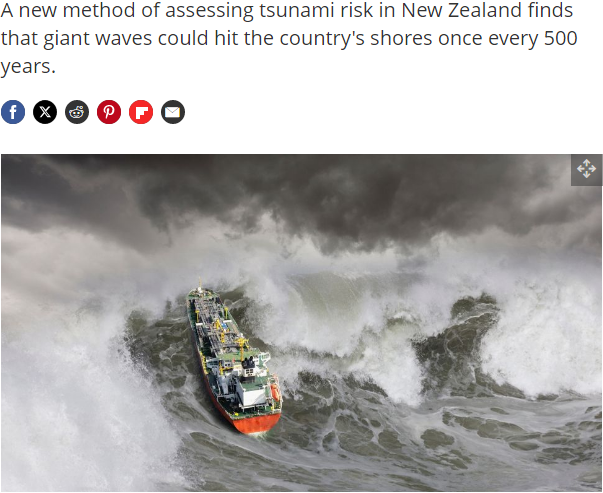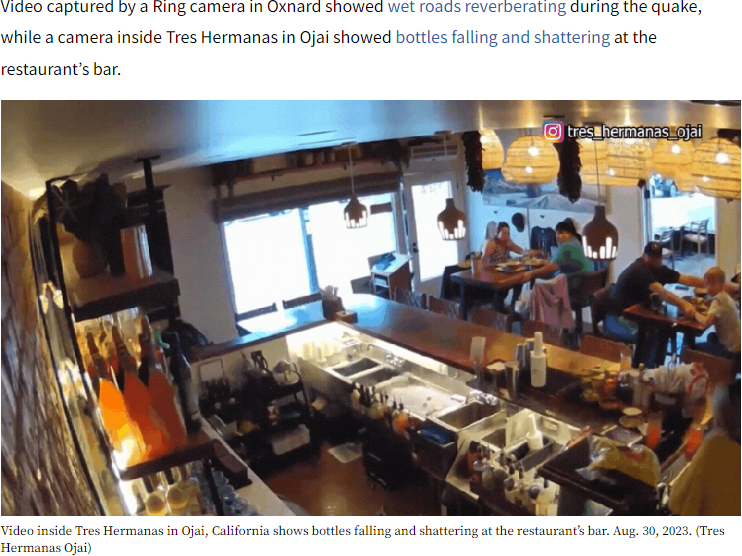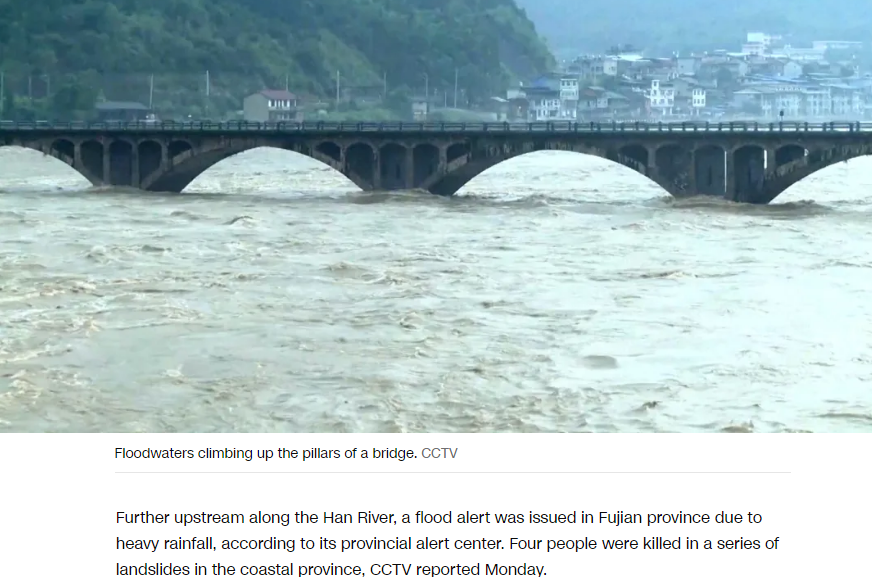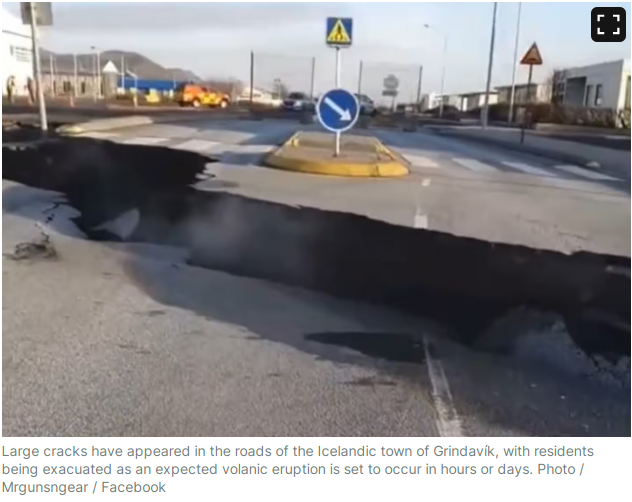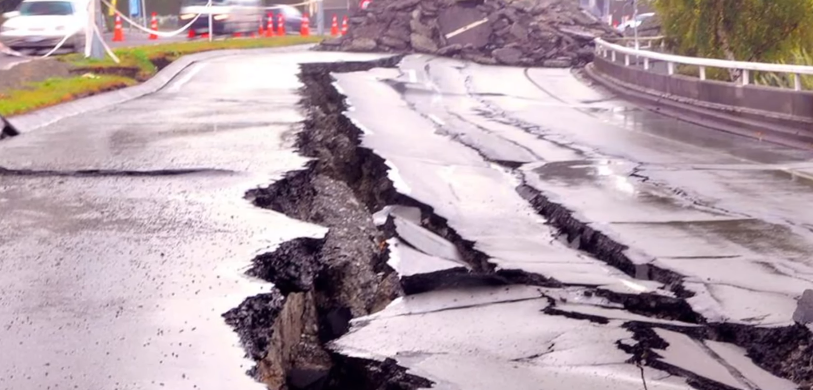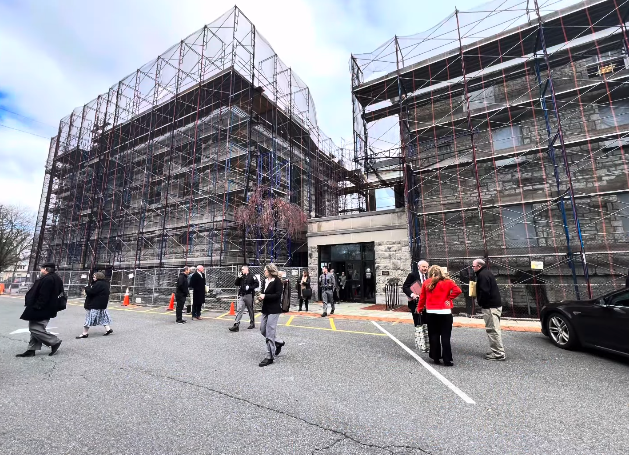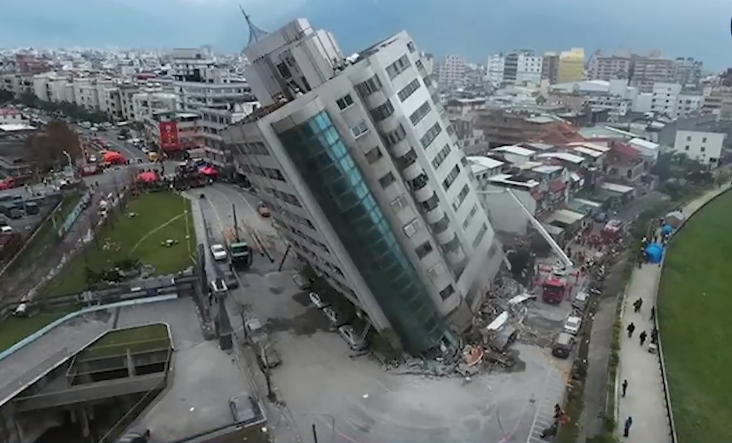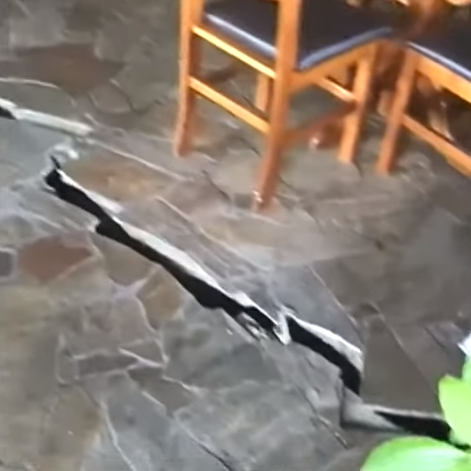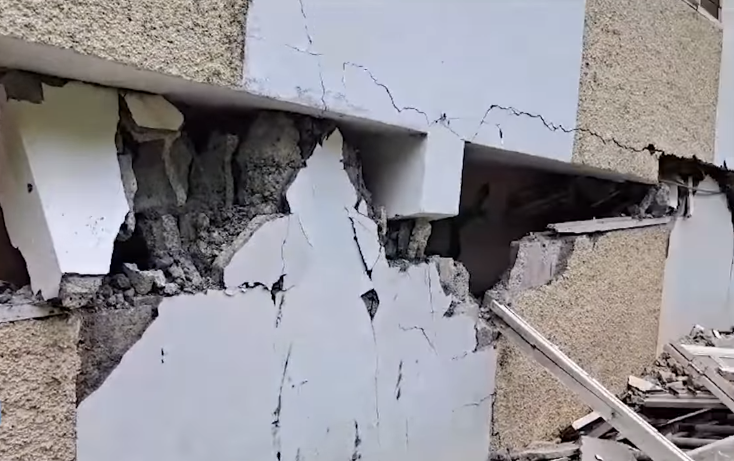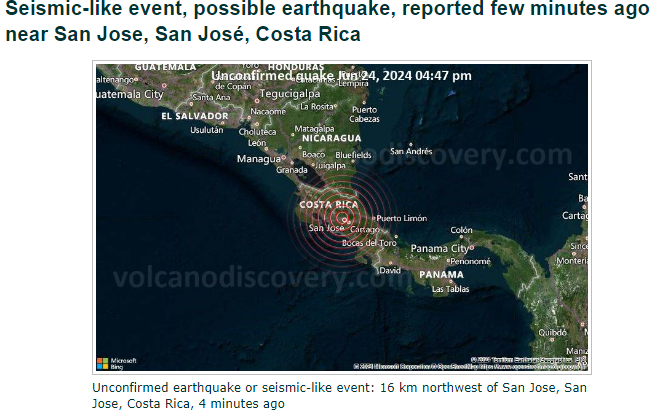| Date | Magnitude | Depth | Location |
|---|---|---|---|
| 2024-07-11 | 6.4 | 10 km | 183 km southwest of Port Alice, B.C., Canada |
| 2024-07-11 | 5.0 | 10 km | Same area as 6.4 magnitude earthquake |
| 2024-07-07 | 3.2 | 0 km | Juneau, Alaska, United States |
| 2024-07-07 | 3.1 | 0 km | Juneau, Alaska, United States |
| 2024-07-06 | 2.3 | 10 km | Coquitlam, British Columbia, Canada |
| 2024-07-06 | 4.2 | 10 km | Vancouver Island, Canada |
| 2024-07-05 | 5.0 | 10 km | Vancouver Island, Canada |
| 2024-07-05 | 4.0 | 10 km | Vancouver Island, Canada |
| 2024-07-04 | 4.4 | 10 km | Vancouver Island, Canada |
| 2024-07-04 | 4.4 | 10 km | Vancouver Island, Canada |
| 2024-07-04 | 4.3 | 10 km | Vancouver Island, Canada |
| 2024-07-04 | 4.3 | 10 km | Vancouver Island, Canada |
| 2024-07-04 | 5.7 | 10 km | Tofino, British Columbia, Canada |
| 2024-07-04 | 4.5 | 39 km | Tofino, British Columbia, Canada |
| 2024-07-04 | 4.6 | 10 km | Tofino, British Columbia, Canada |
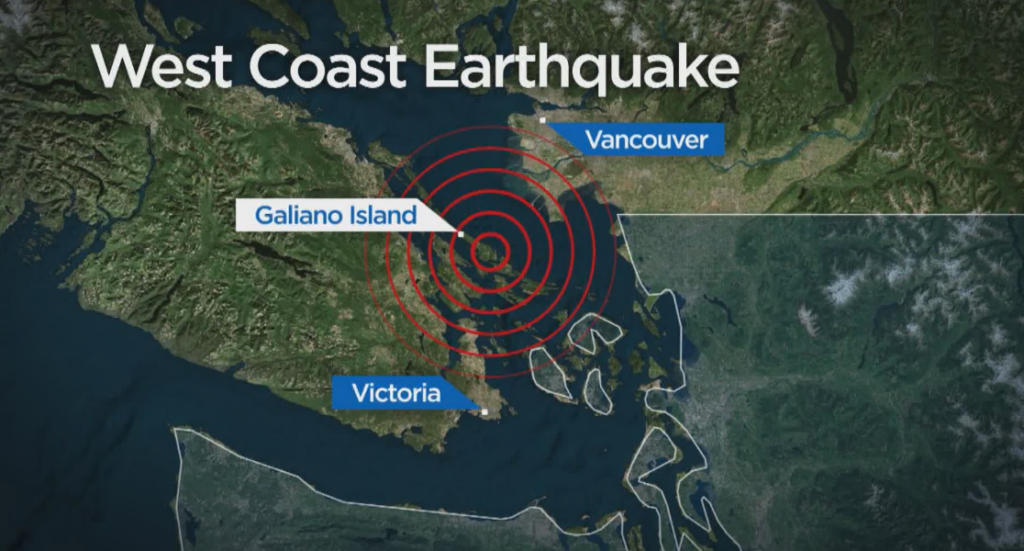
On July 11, 2024, a 6.4 magnitude earthquake struck off the coast of Vancouver Island, Canada, followed by a 5.0 magnitude earthquake an hour later in the same area. This earthquake is part of an ongoing “swarm” of seismic activity in the region, with a total of 12 earthquakes recorded in British Columbia waters since the beginning of July, several of which have exceeded a magnitude of 5.0.
The initial earthquake occurred at 8:08 a.m. PT at a depth of 10 kilometers, about 183 kilometers southwest of Port Alice, B.C., Canada. Although no tsunami or significant damage is expected, some Vancouver Island residents may have felt the earthquake. The second earthquake, with a preliminary magnitude of 4.0, was recorded at 8:35 a.m. PT, followed by a third earthquake of 4.9 magnitude in the same area.
The seismic activity is taking place at the intersection of the northern Juan de Fuca Ridge, Sovanco Fracture Zone, and Nootka Fault Zone, which are all part of a highly intricate tectonic environment. This region has a history of significant seismic activity, with three primary fault systems intersecting near the earthquake site.
Despite the depth and distance from the mainland, the ongoing seismic events serve as a reminder of the vulnerability of B.C.’s coastline in the event of a closer-to-shore earthquake occurrence. Scientists are using these events to enhance their ability to predict and understand future seismic activities.
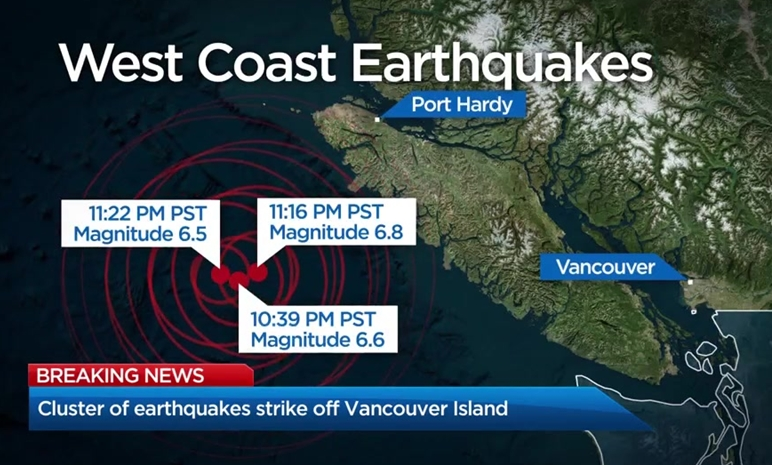
In conclusion, the recent earthquakes near Vancouver Island serve as a reminder of the region’s seismic activity and the importance of being prepared for earthquakes. With ongoing seismic monitoring and scientific research, we can better understand and prepare for future earthquakes in the region.

